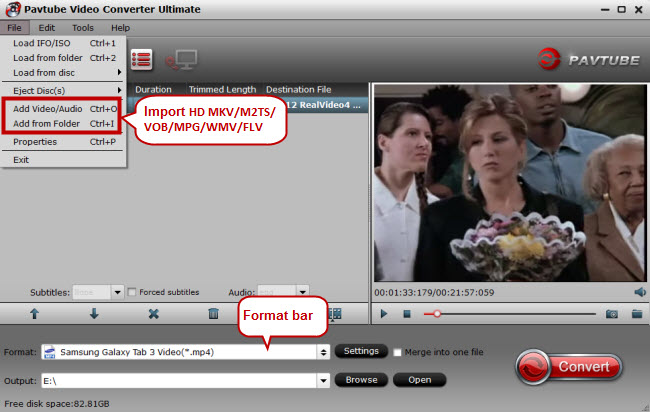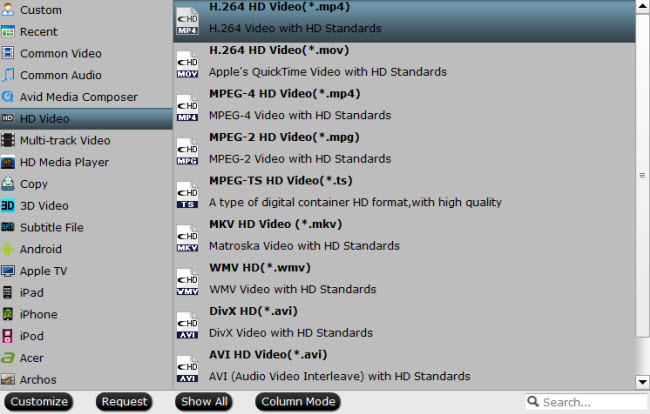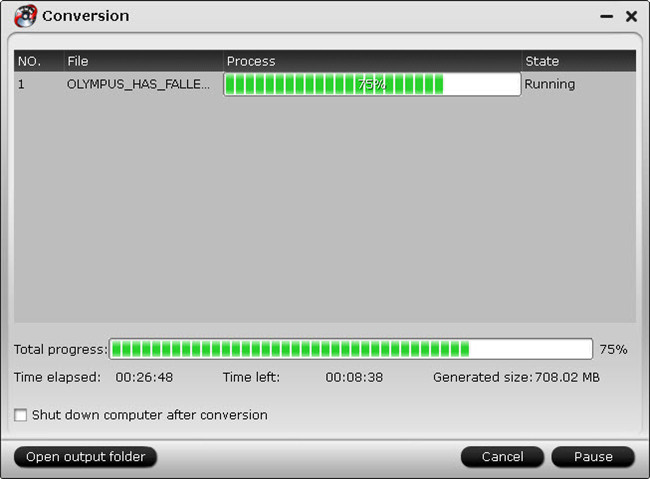With “cloud giants” everywhere, it can be tough to tell if a number one company is top dog because they deserve to be, or if the title has been conveyed because they are among the oldest and most well-known. To help settle the debate, we decided to pit two of the oldest and easiest to recognize businesses head-to-head in order to figure out the answer. When it comes to Dropbox vs Google Drive, who is the best cloud provider?
Dropbox
Dropbox was founded by Drew Houston and Arash Ferdowsi in 2007. The company came about not because they thought it would be a great business idea. Instead, it was developed out of need. Necessity is often the mother of invention and that’s what happened here.
The pair, tired of emailing themselves documents when they were going to be working at different computers than the ones the files were created on, got to work creating an efficient file sharing system. By setting up a secure folder on a server, they were able to access files no matter where they were. The idea took off and quickly spread through the university. 
Today, Dropbox is probably one of the best known cloud storage and sharing providers. With over 300 million active users worldwide, it’s easy to see why some would consider it the number one platform.
In addition to offering personal space to share and save files and photos, Dropbox also offers a business level platform. This package gives users additional features to help their company grow.
Google Drive
Dropbox wasn’t the first to develop the idea of shared storage. Google began working on an online storage platform as early as 2006. Sadly, it took the search engine giant an additional six years before their idea was ready to be used by the world. Google Drive made its official debut on April 24, 2012.
Like its competitor, Google Drive offers consumers a place to store and share files, videos, and photos. With an average of 240 million active users each month, world-wide, this cloud storage platform has the right to claim top status as well. 
In addition to being a storage platform, Google Drive offers users a host of office tools, allowing them to edit and collaborate on stored files without leaving the cloud site, even with recent changes.
Round One: Ease of Use
Any program has a learning curve. However, you don’t want to fight with a difficult to use interface. So, when it comes to the battle of Dropbox vs. Google Drive, which one is simplest?
Dropbox
When it comes to ease of use with Dropbox, it all boils down to whether or not you understand the syncing procedure. You can also add files and folders via the web browser. However, the upload button may be a little obscure to some users.
Instead, Dropbox uses a dedicated syncing folder that is added to the desktop or mobile device. You must then place each file or folder inside. Once there these documents automatically since with the online account. However, a large initial upload can be time consuming.
The actual options from within the web application are fairly straightforward. Files are sorted into folders for you, based on type and sharing is simple as making a few selections.
Google Drive
Google Drive is not without fault. While it does have the option to upload documents from within a web browser (something we couldn’t find on Dropbox), it is far from perfect. As should be expected from a cloud storage application, it dumps everything into one central location. The only folders made are the ones you create yourself.
When reviewing the Google Drive site, we found the buttons along the top were not always intuitive. While it may be obvious to some what the icons mean, the share option could be confusing to those who are looking at it for the very first time. We found it easier to share folders by right clicking the desired file and selecting “share with.”
However, despite the problematic buttons, we did find that there were more options than simply sharing and saving. Users can create documents within their cloud folder and color code their icons to help set them apart from the rest. Again, we must complain that finding these features lacks the simplicity many users are interested in.
Winner: Google Drive, for the extra options and ability to upload directly from the web browser.
Round Two: Reliability
While being easy to use is important, being reliable is equally critical. A cloud storage site does users little good if information goes missing or is inaccessible for hours at a time. So, who has better reliability– Dropbox or Google Drive?
Dropbox
According to a study reported on in March 2013, BoxFreeIT spent six months testing and monitoring Dropbox to find out exactly how reliable the company really was. They tracked the server for over 264,000 minutes. During that time, the cloud storage provider had approximately 412 minutes of down time, just under seven hours. Not a bad score for half a year.
However, they were concerned with determining whether or not there were any “unconfirmed” downtime events. When checked, they found an additional 574 minutes of abnormal recordings. These could be explained as downtime that was less than 10 minutes, and generally ignored as true offline instances. The company could have also been performing scheduled maintenance which they would also ignore in their reporting.
Even with including these new occurrences, Dropbox has an average uptime of 99.65 to 99.83%. These figures do take into account that Dropbox runs on Amazon S3 servers.
With that being said, there have been some issues lately with Dropbox’s sync folder not properly adding files, causing people to think things are backed up when they are not. The cloud company has supposedly fixed the issue, but not before many customers lost precious folders that they cannot get back. That incident alone would make some users question the reliability of their software.
Google Drive
When it comes to uptime reliability, Google Drive can easily go toe-to-toe with Dropbox. While we didn’t find a study that was as extensive as the other survey, we did manage to find some information on how good Google is about staying online.
In a study conducted by Pingdom, the group monitored Google Drive and some of their competitors over a 30 day period. During this time, the cloud storage company only experienced one minute of downtime. Because of the insignificant amount of time it was unavailable to clients, they awarded them with a 100% rating. (Dropbox was included in this study and they experienced 13 minutes of down time.)
Again, however, uptime isn’t the only thing that is considered a reliability issue. Google Drive has also experienced unexplained loss of files from their servers. Many users have complained that files were removed from their accounts without their knowledge. Seems like Google has a memory issue.
Winner: Dropbox, only because the lost files were due to syncing problems. Not the loss of currently residing data.
Round Three: Speed
Uploading, downloading, opening and sharing all need to happen as quickly as possible. When it comes to getting information, consumers want it fast. Speed is important, especially when trying to save a file to the cloud or trying to restore data from online. That’s why it was necessary to grade Dropbox and Google Drive on how speedy they were.
Dropbox
We tested how fast Dropbox uploaded files. In our test, we used a folder with 359 pictures and an overall file size of 42.2 MB. Despite being known for taking extra time to save an initial load of files, this trial only took approximately three minutes to transfer. We then took the same file and downloaded it to the desktop. The task was completed in a matter of seconds.
In the past, consumers have complained the process does not allow them to see files as they were uploading and downloading. In fact, if the folder wasn’t completely saved, no part could be retrieved to a local drive. This has changed recently and all documents or pictures can be viewed as they are being transferred to and from the Dropbox folder.
Google Drive
When it comes to speed, Google is the proverbial turtle in the race. Slow and steady may win some prizes, but when it comes to saving information, it’s not a quality often desired.
To keep the playing field even, we used the same exact file that we tested on Dropbox. File size was still 42.2 MB and there were still 359 pictures. However, when the transfer began, Google Drive indicated it was only uploading 356 files. After seven minutes of working, only three pictures had supposedly been saved. To be honest, we gave up staring at the screen at this point and canceled the transaction.
We had saved other files in the past, so we tried downloading one of these files, again similar in size to the one we tested Dropbox with. Sadly, this process also took several minutes because Google had to determine if the data could be compressed into a file 2GB or smaller. Once the analysis was done, it still took several minutes to put the information into a .zip file and transfer it to our local drive.
Winner: Dropbox.
Round Four: Features
Features play an important part in helping to determine which cloud company you should go with. Once all the other options are weighed, sometimes it’s the extra highlights that can make or break any decision. But who has the best options; is it Dropbox or Google Drive?
Dropbox
Dropbox’s personal accounts aren’t feature heavy. Which doesn’t mean there are no offerings, it is just a very basic program. This could actually be a selling point for many clients who want something that doesn’t have a lot of bells and whistles.
Account size, while not necessarily considered one of these important features, should be taken into consideration here. Free service only gains you 2GB of storage space. Additional room can be purchased starting at $9.99 a month.
Dropbox allows you to check files anywhere. Because files transfer quickly, they are accessible almost instantly. In addition, the program works with all devices– including:
Windows
Mac
Linux
iPhone
iPad
Blackberry
Android
Dropbox also allows you to share with and invite friends in a simple manner. A single click or two allows you to share or send links to any folder or file in your account. You can choose to edit files on a phone or other mobile devices. They also keep a one-month history and changes are easily undone.
In addition, Dropbox has very widespread third-party integration. Consumers like the fact they can create files in some of the applications and upload them directly to their cloud storage account.
Google Drive
When it comes to features, Google Drive does seem to have a leg up on the competition. To begin with, you should notice the difference in free account size. This cloud storage platform offers a free 15 GB to users. Additional storage can be purchased if desired for as little as $1.99 a month.
Other features include:
Create documents, spreadsheets, and presentations
Works with products such as Gmail and Google+
Search tools
View over 30 file types including Adobe Illustrator and Photoshop
Files are saved are saved for 30 days automatically
Start a discussion
Having the ability to create different types of documents allows simultaneous collaboration, an added plus for many consumers. It allows them to start tasks in their cloud drive and not on their local disks, which can save time when sharing information.
Winner: Google Drive, based on the amount of features.
Round Five: Security
Security is probably the thing most people will look at when trying to decide where they should store information. You want to make sure that your documents and files are safe without having to worry about someone stealing the data. This has been an area where many cloud companies take a hit. So, who keeps your documents safer?
Dropbox
Dropbox guarantees that your files will be protected by AES-256 bit encryption. However, this hasn’t kept the service from being used against customers. In the past few months, the service has been the victim of several phishing scams. These vicious attacks tricked users into giving up their usernames and passwords by making them think someone has shared a file. What made it so bad was the fact the links would take them to a legitimate looking Dropbox site.
Additionally, the service has been subject to a glitch which allowed private information to be searchable by a third-party. This problem was patched quickly, however many sensitive documents were leaked online before the issue was caught.
Google Drive
Like its counterpart, Google offers AES-256 bit encryption for their customers. Like the competition, this promise of security doesn’t keep Drive from having its share of problems. However, problems aren’t just about phishing schemes and other external factors. They are more internal.
Google was one of the companies outed when Edward Snowden spread the word about NSA. Apparently, the search engine giant was caught over-reaching their terms of service. Instead of protecting their users, employees were able to access private files and disseminate them as they chose.
The NSA is also accused of gaining access to Google Drive files. The intelligence agency claims they were only taking data from foreign countries. However, there is no way to guarantee that there was no American information taken during this time.
Neither Google Drive nor Dropbox support local encryption of files. Both cloud storage providers encrypt data in transit and while saved on their servers.
Winner: Dropbox only because their breaches were mainly external not internal security issues.
Summary:
Choosing a cloud storage provider is a personal decision. Some users like the fact that Google Drive allows the creation of files and simultaneous collaboration on documents. Others like the third-party integration Dropbox offers.
While it was quite difficult to figure out who the clear winner is, we have to go with Dropbox. One of the tipping points being the security issues that Google has suffered. In addition, while they are equally reliable on their uptime and downtime, Dropbox lost less files that were already on their servers.
How to Upload DVD movies to Dropbox and Google Drive?
Both Dropbox and Google Drive focus on the saving and management of data. When you got the troubles of disc loss or damage or the space of physical hard disk is low, you can ripping DVDs to cloud lets you upload a personal DVD to Dropbox and Google Drive personal cloud media storage, enable you can share DVD Movies with your family members or access your movies at home or on the road.
Almost all movies are encrypted with CSS copy protection. Decryption keys are stored in the normally inaccessible lead-in area of the disc. You’ll usually get an error if you try to copy the contents of an encrypted DVD to Dropbox and Google Drive and other Cloud Storage devices. However, if you have used a software player to play the movie it will have authenticated the disc in the drive, allowing you to copy without error, but the encryption keys will not be copied. If you try to play the copied VOB files, the decoder will request the keys from the DVD-ROM drive and will fail. You may get the message “Cannot play copy-protected files”.
Now that it doesn’t work to directly copy DVDs to Dropbox and Google Drive. To turn a real-world DVD into a digital file that you can stream to the viewing platform of your choice, you have to rip it from the disc. As with ripping DVDs, you’ll copy the contents of a DVD to a Cloud-friendly format. In order for this to work, obviously, you must have access to a PC with a DVD drive.
One quick caveat: Though the police won’t break your door down for ripping DVDs that you already own, the process does technically violate copyright law. Still, as long as you’re not sharing movies on BitTorrent or selling copies on the street, it qualifies as fair use – just as ripping CDs (which is technically legal) does.
That said, you’ll need a DVD-ripping utility that can remove DVD protections and then rip DVDs to Dropbox and Google Drive support MP4, AVI, MOV, FLV, WMV etc. video files.
But you’ll find that almost all commercial DVD discs failed to load with Handbrake. Now that Handbrake doesn’t work to directly copy DVDs to Cloud, using iFastime Video Converter Ultimate (Mac) is the best way, it circumvent most copy protection schemes and convert the DVD discs to the Cloud – the mobile – or home-theater-friendly format of your choice.
The best DVD to Cloud converter offers powerful yet easy-to-use functions, excellent video/audio quality, and fast ripping speed. It is not only a professional yet easy-to-use DVD ripping application that helps you rip your DVD movies to whatever video or audio files. It is also your ultimate solution to convert DVD, Blu-ray, BD/DVD ISO, and any SD/HD/4K videos to Dropbox/ Google Drive friendly formats for smooth uplaoding.
Upload videos to Dropbox:
- DVD to Dropbox
- Blu-ray to Dropbox
- ISO to Dropbox
- H.265/HEVC Video to Dropbox
- YouTube to Dropbox
- iPhone/iPad/Android phone videos to DropBox
Upload videos to Google Drive:
- DVDs to Google Drive
- ISO to Google Drive
- transfer and sync files between Dropbox, OneDrive, Google Drive
Other Download:
– Pavtube old official address: http://www.pavtube.cn/blu-ray-video-converter-ultimate/
– Cnet Download: http://download.cnet.com/Pavtube-Video-Converter-Ultimate/3000-2194_4-75938564.html
Have more questions about Dropbox vs Google Drive, please feel free to contact us >> or leave a message at Facebook.
























Comments